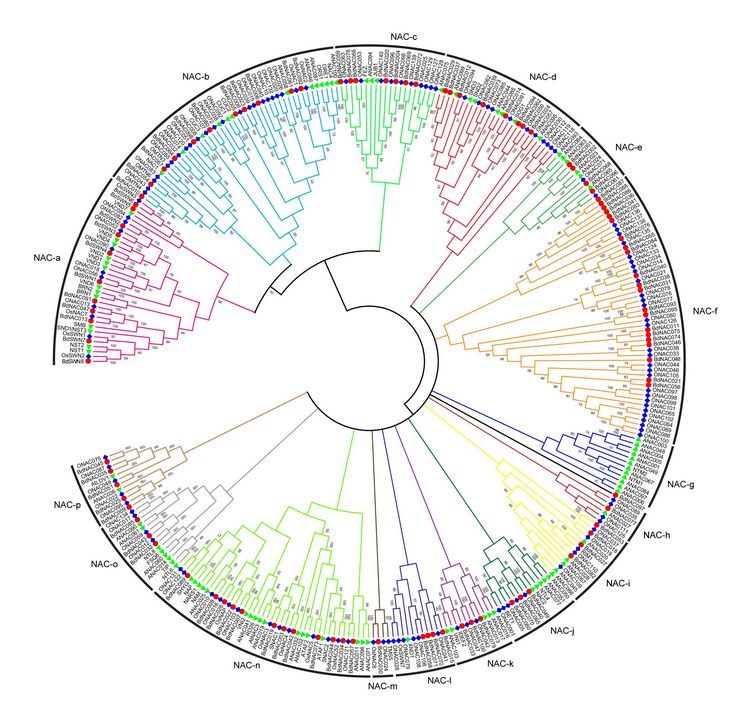Researchers Performe Comprehensive Analysises of the NAC Gene Family in Brachypodium distachyon
2015-04-27
Brachypodium distachyon is a small annual temperate grass, and the first member to be sequenced within the grass subfamily Pooideae, including wheat, barley, and switchgrass. Due to its small genome size and plant size, short life cycle, and efficient cultivation and transformation systems, B. distachyon has become a model system for functional genomics studies in temperate cereals.
NAC, which was derived from the names of the three firstly described proteins containing the similar conserved DNA-binding domain, namely NAM (no apical meristem), ATAF1/2 and CUC2 (cup-shaped cotyledon), is plant-specific transcription factor gene family. Members of this family were found to participate in many biological processes, such as plant development and stress responses, aging and secondary wall synthesis.
Prof. CHAN Zhulong and Dr. YOU Jun from Wuhan Botanical Garden made systematic analysises of the NAC gene family in B. distachyon. In this study, 101 putative NAC domain-encoding genes (BdNACs) were identified in B. distachyon.
Phylogenetic analysis using known stress-related NACs from Arabidopsis and rice as query sequences identified 18 BdNACs as putative stress-responsive genes. Expression profile analysis of BdNAC genes demonstrated that several putative stress-responsive BdNAC genes were highly regulated by multiple abiotic stresses and stress-related phytohormone treatments. This study provides important clues for further elucidating the functions of the NAC TFs (transcription factors) in B. distachyon.
Results were published in PLOS ONE (doi:10.1371/journal.pone.0122027) entitled “Systematic Analysis and Identification of Stress-Responsive Genes of the NAC Gene Family inBrachypodium distachyon”.

Phylogenetic tree of NAC TFs from B. distachyon, Arabidopsis and rice (Image by Dr. YOU Jun)